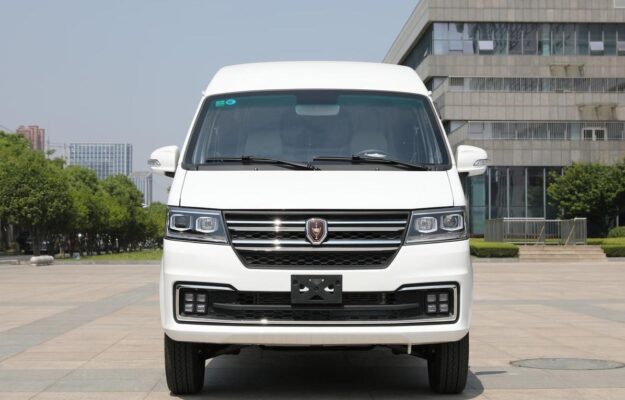Xov xwm tsheb loj
Why Do Electric Vehicles Lack Power at High Speeds?
Tsheb faiss (EVs) are becoming an increasingly popular mode of transportation due to their environmental benefits and efficiency. tiam sis, a commonly noted issue is that some EVs struggle to maintain sufficient power during high-speed driving. This issue can be attributed to several factors:
1. Differences in Power Systems Compared to Traditional Vehicles
Tsheb faiss use electric motors as their primary source of propulsion. Unlike internal combustion engines (ICEs), electric motors exhibit different torque and power characteristics. EVs typically deliver maximum torque at low speeds, providing impressive acceleration from a standstill. tiam sis, as speed increases, the energy demand on the motor rises exponentially due to factors such as wind resistance. This results in the motor requiring more power, which in turn drains the battery rapidly.
Battery capacity and energy density also play crucial roles. While EV batteries are continually improving, they still face limitations in delivering sustained high power for long durations. When driving at high speeds, the battery depletes faster, leading to a noticeable drop in performance.
2. Lightweight Vehicle Design
To maximize efficiency and extend range, EV manufacturers often prioritize lightweight vehicle design. While this approach reduces overall energy consumption, it also makes the vehicle more susceptible to aerodynamic drag at higher speeds. A lightweight structure, while advantageous for city driving, may lack the stability and power needed for sustained high-speed performance.
3. Insufficient Charging Infrastructure
The lack of comprehensive and convenient charging infrastructure further exacerbates the issue. High-speed driving typically results in rapid battery depletion. On long journeys, especially on highways, the scarcity of charging stations can cause “range anxiety” for drivers. The limited availability of high-speed charging stations along highways makes it challenging for EVs to recover energy quickly, thus impacting their usability for extended high-speed travel.

How Can the Issue of Limited High-Speed Power Be Addressed?
Solving the problem of insufficient power at high speeds requires a multi-faceted approach involving technological advancements, improved infrastructure, and supportive policies.
1. Technological Advancements
- Improved Electric Motors: Research and development efforts should focus on designing electric motors capable of maintaining high power outputs without compromising efficiency.
- Enhanced Battery Technology: Advancements in solid-state batteries and other next-generation energy storage solutions could provide higher energy densities, enabling EVs to sustain high-speed performance for longer durations.
- Efficient Power Management Systems: Incorporating intelligent power management systems can optimize energy distribution, ensuring the motor operates efficiently at various speed ranges.
2. Expanded Charging Infrastructure
- Highway Charging Networks: Governments and private enterprises should invest in creating a dense network of fast-charging stations along highways and major travel routes.
- Ultra-Fast Charging Technology: Adopting ultra-fast charging systems that can recharge a significant portion of the battery in minutes would enhance the feasibility of long-distance travel.
- Integration with Renewable Energy: Charging stations powered by renewable energy sources such as solar and wind can reduce the environmental footprint of EV charging.
3. Aerodynamic and Structural Optimization
- Aerodynamic Improvements: Reducing the drag coefficient through streamlined designs can significantly improve high-speed performance and energy efficiency.
- Lightweight but Durable Materials: Utilizing advanced composite materials can balance the need for lightweight construction with the structural integrity required for high-speed stability.
4. Policy and Market Incentives
- Research Grants and Subsidies: Governments can support R&D initiatives aimed at overcoming high-speed performance challenges in EVs.
- Tax Incentives for Charging Stations: Offering tax breaks and other financial incentives for businesses to install charging infrastructure can accelerate the pace of development.

Does High-Speed Power Limitation Mean EVs Have No Future?
The short answer is no. While current EVs may face challenges in high-speed scenarios, their overall benefits and future potential far outweigh these limitations. EVs are still a nascent technology compared to ICE vehicles, which have had over a century of refinement.
- Environmental Benefits: EVs produce zero tailpipe emissions, significantly reducing air pollution and greenhouse gas emissions.
- Cost Efficiency: Tsheb faiss generally have lower operating and maintenance costs compared to ICE vehicles. As battery costs continue to decline, EVs will become even more accessible to the average consumer.
- Technological Momentum: The rapid pace of innovation in battery technology, charging infrastructure, and motor efficiency suggests that many of the current limitations will be overcome in the near future.
- Policy Support: Governments worldwide are implementing policies to phase out ICE vehicles and promote EV adoption, ensuring that EVs remain a priority for the automotive industry.
How Can Future High-Speed Performance Be Improved?
Enhancing high-speed capabilities requires a concerted effort in several areas:
- Battery Research: Continued focus on developing batteries with higher energy densities, faster charging times, and longer lifespans will directly address range and power issues.
- Motor Innovation: Creating motors with improved efficiency at high speeds can help maintain performance without excessively draining the battery.
- Advanced Aerodynamics: Further research into reducing drag and improving stability at high speeds will complement powertrain improvements.
- Infrastructure Development: A well-established charging network, particularly on highways, will alleviate range anxiety and make long-distance, high-speed travel more practical.
- Collaborative Efforts: Partnerships between governments, automakers, and energy providers will be essential to building a sustainable ecosystem for EVs.

Xaus
Electric vehicles may currently face challenges in maintaining high-speed power, but these issues are not insurmountable. With ongoing advancements in technology, improved charging infrastructure, and strong policy support, EVs are well on their way to becoming the dominant form of transportation. Addressing high-speed performance issues will not only make EVs more competitive with traditional vehicles but also solidify their role as a cornerstone of sustainable mobility in the future.
